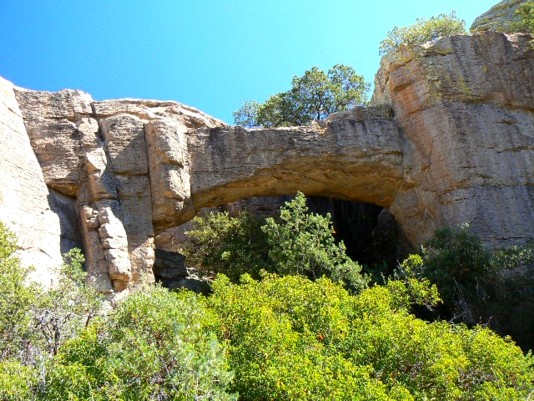Chiricahua National Monument
Pronounced Cheer-i-cow-a, this national monument is one of our favorites in Arizona. Truly a hidden gem. Very exciting for the park and the local community, it sounds like this wonderful place will soon be designated as a National Park.
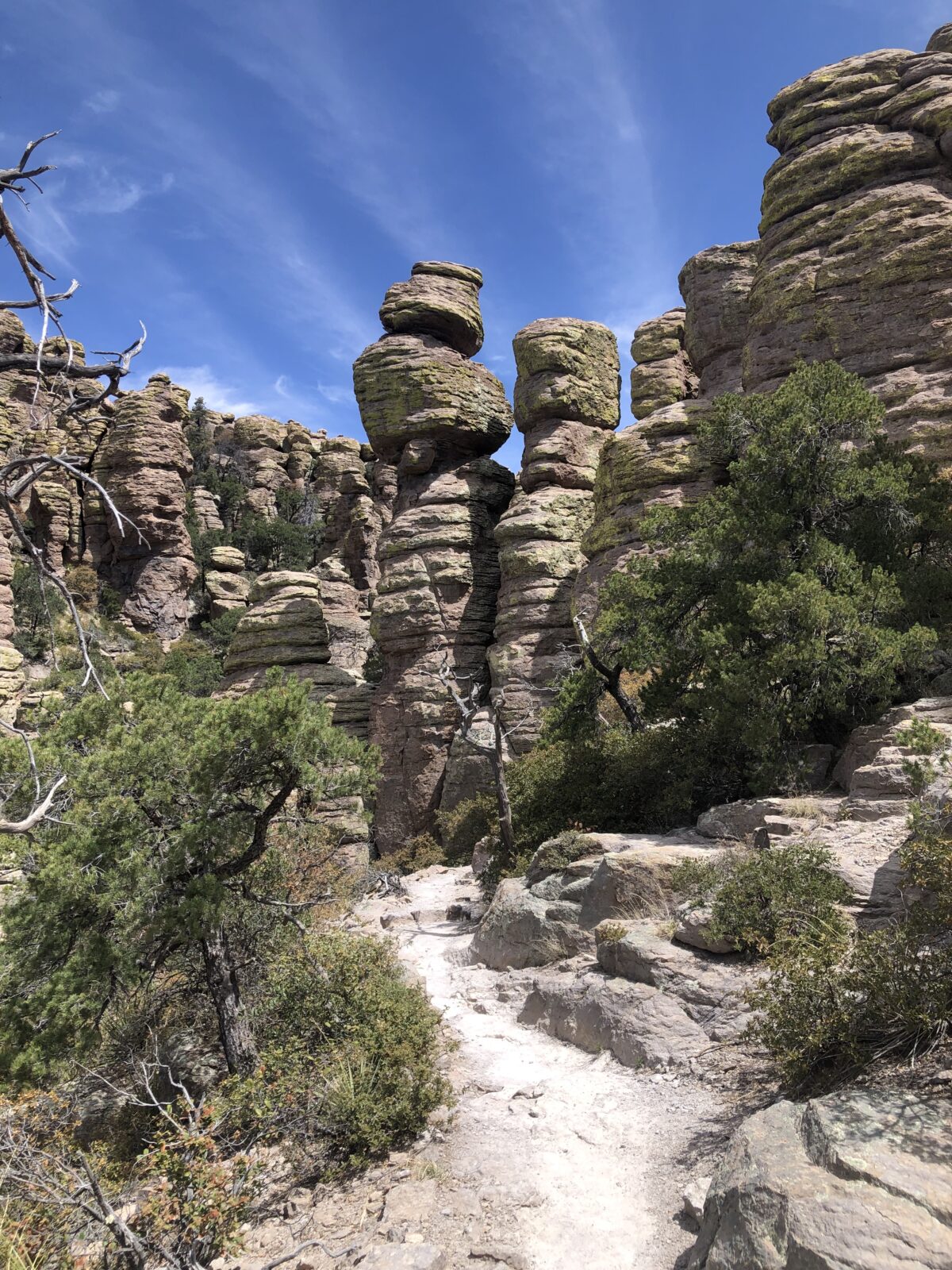
We were fortunate enough recently to be able to spend a long weekend there, camping at Bonita Canyon, a tiny campground with just 25 sites nestled in a cool valley. It is especially lovely there in the spring. The canyon is filled with oak trees that all lose their leaves, not in fall, but in the spring. So walking around the campground in April you will be walking through piles of fallen yellow leaves. It feels like October!
The Chiricahua’s are located in south eastern Arizona, where the Sonoran desert meets the Chihuahuan desert, and the Rocky Mountains meet the Sierra Madre. It is a very interesting area – a “sky island” with mountains surrounded by a sea of grass. Plants and animals that thrive on these mountains, rising as much as 6,000 feet over the valley below, could not survive the blistering heat of the surrounding deserts and are effectively trapped or isolated on these islands.
Biomes
These sky islands are home to multiple “biomes”, ecological zones characterized by their soil, climate, plants and animals. The Chiricahua’s host 5 different biomes, from desert, grassland and chaparral to deciduous and coniferous forests. Throughout the park you will see a mix of these biomes, with yuccas, agaves and prickly pear thriving right next to pine, juniper and oak trees. One of the most interesting trees is the Apache Pine, with needles that can be as long as 15 inches; perfect for weaving into durable baskets.
The park also hosts a wide range of animal and bird life. At higher reaches of the park, there are black bear, mountain lion and bobcats. Lower elevations are home to javelina, and coyotes, plus reptiles like spiny lizards and rattlesnakes. Most special to us were the coatimundi. We saw a “troop” of mamma’s and their children crossing the road.
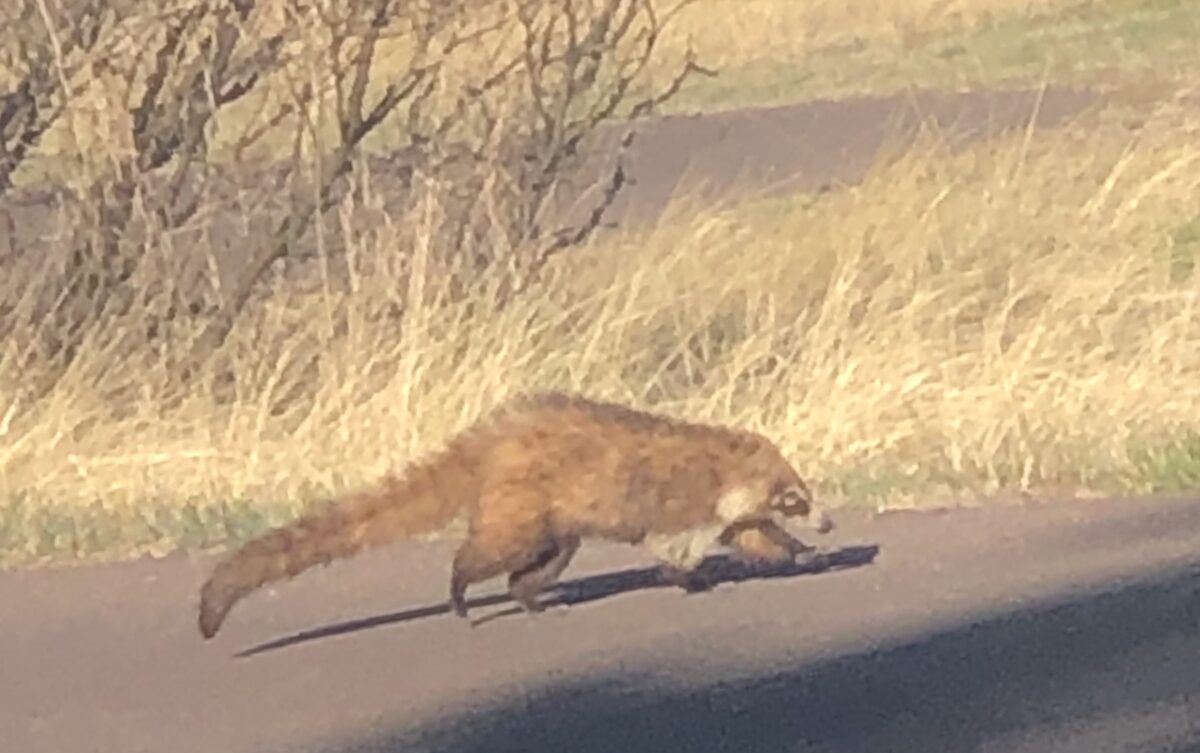
The park counts more than 200 bird species, including many Mexican birds found nowhere else in the US. But you don’t have to be a birder to enjoy this place. Mexican Jays scavenge throughout the campground (don’t feed them) and you can easily spot Acorn Woodpeckers with their distinctive red heads and black feathers. Turkey vultures soar on air currents high above the mountain peaks, and hawks perch high above the grasslands searching for prey.
Turkeys
One of the most common animals you see in the Chiricahua’s are the turkeys. In fact, some say that this mountain range was known for all the wild turkeys and that the word Chiricahua actually means wild turkey in Opata.
Keeping with the turkey theme, the Chiricahua mountains were formed by the eruption of the Turkey Creek Volcano, some 27 million years ago. This volcano spewed ash and debris, and formed a caldera about 12 miles wide. As the ash settled, it created a thick layer of rock called rhyolite tuff which eroded over time to create the amazing rock formations and pillars you see throughout Chiricahua National Monument.
Natural Bridge Hike
These formations are best viewed from the hiking trails. This trip we sampled a new trail – the Natural Bridge trail. Just 1 mile from the campground, this 5 mile out and back hike takes you to a 30 foot long natural bridge made of volcanic rock, clearly visible from the end of the trail.
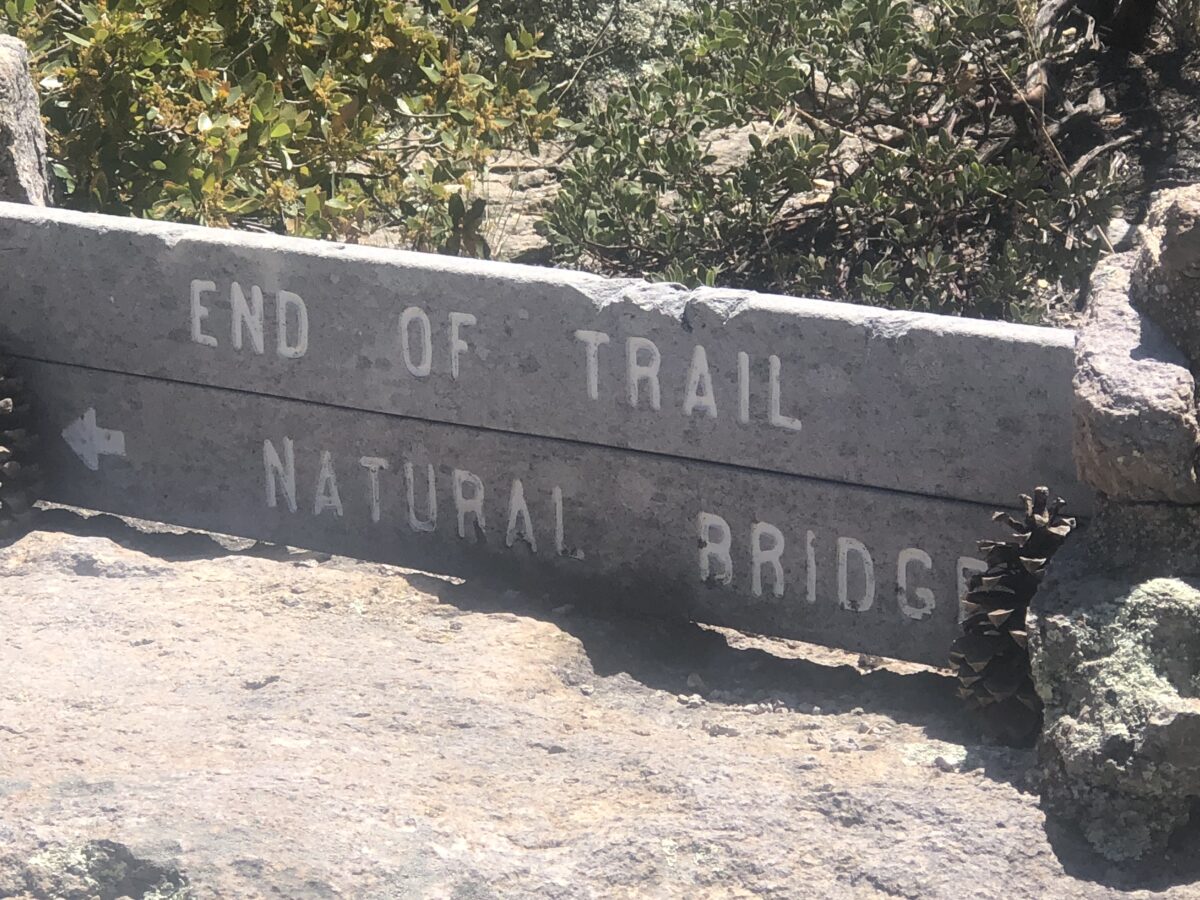
From the trailhead you cross over Bonita Creek, then walk through North Bonita Canyon. It starts out green and shady, winding through oak and cypress trees. Then you go up hill, following long gradual switchbacks until you get out of the trees. At this point you have great views out over the rhyolite rock formations that the Chiricahua’s are best known for.
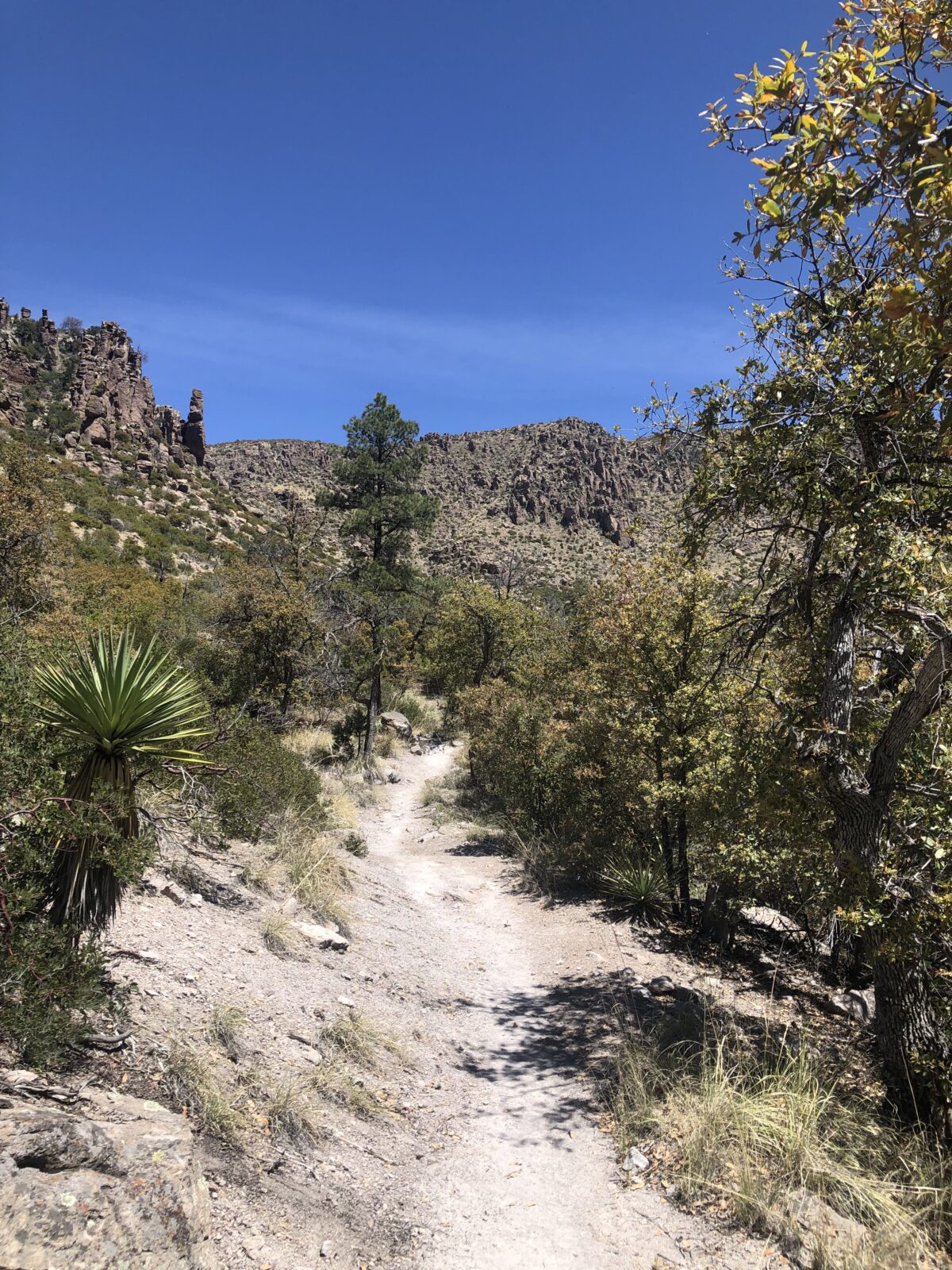
We really experienced the variety of biomes along this trail. You start out in oak and cypress, and then move into manzanita, yucca and lots of grasses (the most common is “grama grass”). As you continue, you see more and more cactus, but once you crest the first hill you descend into a lush valley full of deciduous trees and conifers, plus prickly pear and yucca. In contrast, the valley is surrounded by rolling grassy hills.
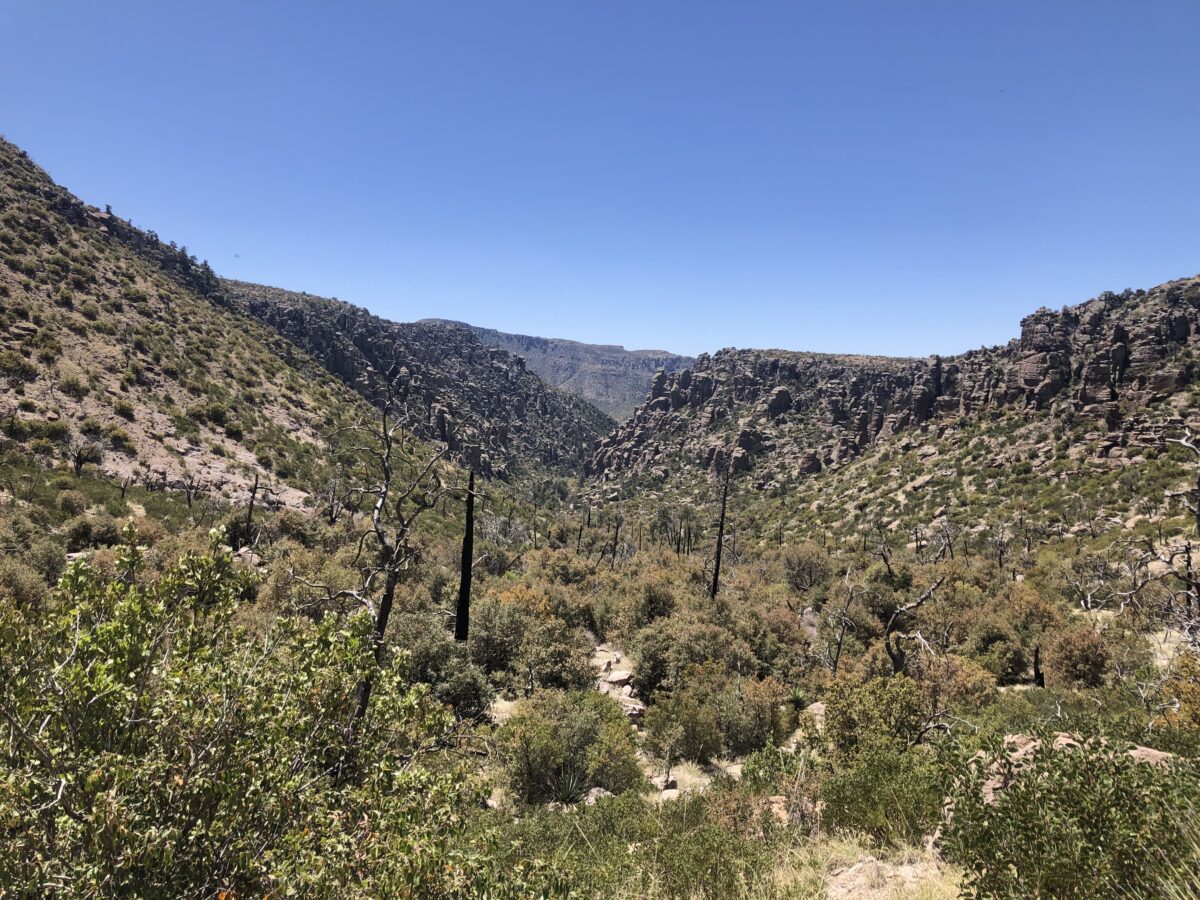
One of the best parts of this trail is that it is not very heavily trafficked. On the entire hike, we met only 3 other couples, plus one coatimundi foraging in the rocks along the trail. This was by far these least travelled hike we had been on here, but whatever hikes you do in Chiricahua, you won’t be disappointed.
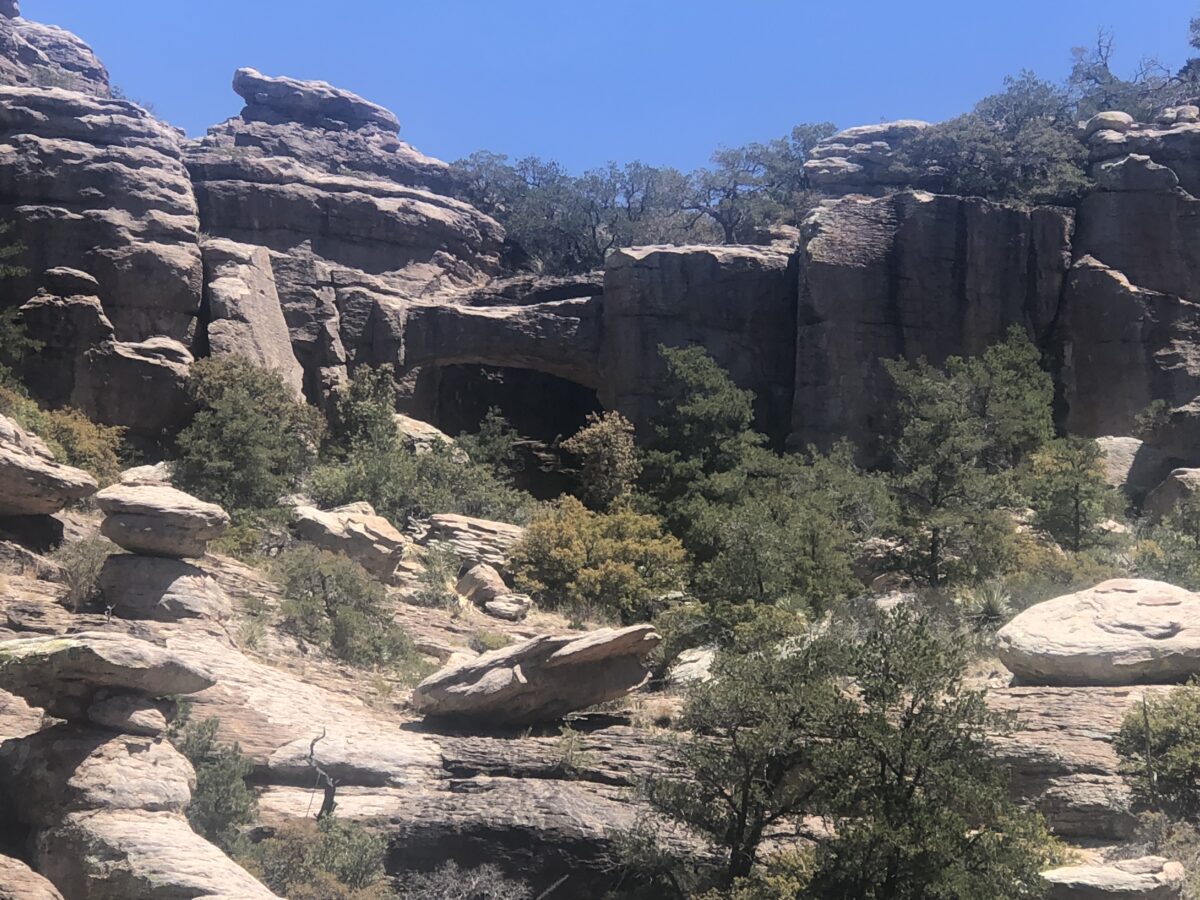
Are you trying to visit all the National Parks or National Park Units?
If your goal is to visit them, one or all, we’d love to help you strategize. Give us a call at (480) 609-3978 or drop us a note here. We always enjoy talking with people who share our passion for visiting these gems of the National Park Service.
#FindYourPark
#SeeAmericaFirst
